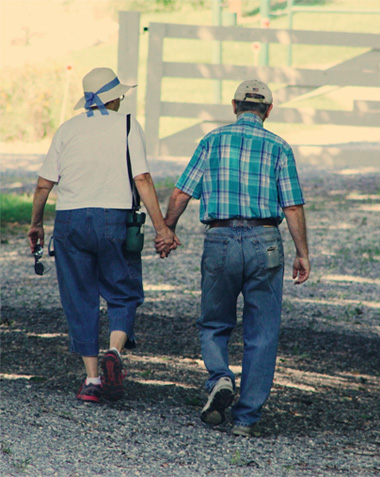 The term vertigo refers to the sensation of spinning or whirling that occurs as a result of a disturbance in balance (equilibrium). It also may be used to describe feelings of dizziness, lightheadedness, faintness and unsteadiness. Vertigo usually occurs as a result of a disorder in the vestibular system (i.e., structures of the inner ear, the vestibular nerve, brainstem and cerebellum). The vestibular system is responsible for integrating sensory stimuli and movement and for keeping objects in visual focus as the body moves. Benign paroxysmal position vertigo (BPPV) is a common cause for dizziness. After careful examination, our physical therapists determine if dizziness is vestibular, mechanical or cervicogenic. Treatment is then designed accordingly.
The term vertigo refers to the sensation of spinning or whirling that occurs as a result of a disturbance in balance (equilibrium). It also may be used to describe feelings of dizziness, lightheadedness, faintness and unsteadiness. Vertigo usually occurs as a result of a disorder in the vestibular system (i.e., structures of the inner ear, the vestibular nerve, brainstem and cerebellum). The vestibular system is responsible for integrating sensory stimuli and movement and for keeping objects in visual focus as the body moves. Benign paroxysmal position vertigo (BPPV) is a common cause for dizziness. After careful examination, our physical therapists determine if dizziness is vestibular, mechanical or cervicogenic. Treatment is then designed accordingly.
Gait dysfunctions are changes in your normal walking pattern, often related to a disease or abnormality in different areas of the body. Gait dysfunctions are among the most common causes of falls in older adults, accounting for approximately 17% of such incidents. Gait and balance problems exist when a disease process, trauma or aging result in the inability to control one’s center of gravity (COG) over the base of support (BOS) in static or dynamic tasks and environments.
Poor Balance May Occur Due To:
- Impaired sensory processes (visual, vestibular, somatosensory)
- Inadequate neuromuscular responses (signaling of brain to/from muscle)
- Musculoskeletal problems (impaired range of motion, strength, flexibility)
- Decreased cognition (inability to anticipate or adapt to postural needs)
Inactivity and disuse are perhaps the most common causes of such problems because of muscle weakness, joint stiffness, and pain with activity.
The fear of falling can also be a factor which leads the individual to become less active, perpetuating the likelihood of further episodes due to accelerated motor weakness and joint stiffness.
Our clinical staff are experts at identifying the root causes of gait dysfunctions. After a thorough evaluation—including history taking, observation, gait speed measurements, balance tests, strength and range-of-motion measurements, and reflex and sensation screening— our physical therapist will be able to diagnose a gait dysfunction, determine fall risk and design treatments that restore healthy gait.
Treatment with physical therapy to strengthen muscles, increase joint mobility and/or stability and reduce pain. We teach how good posture, body mechanics, ergonomics, and other activities influence the patients' condition. These factors aid recovery and help prevent recurrences.